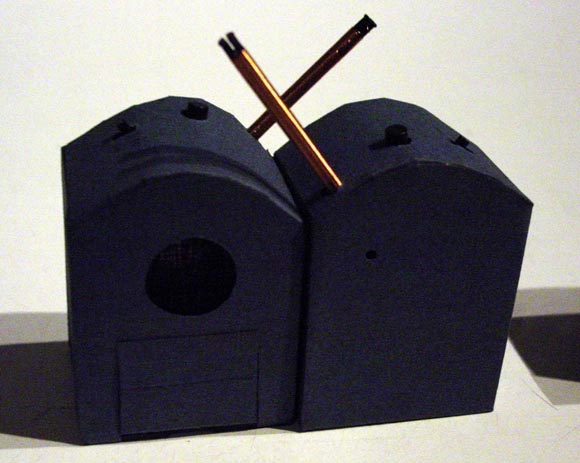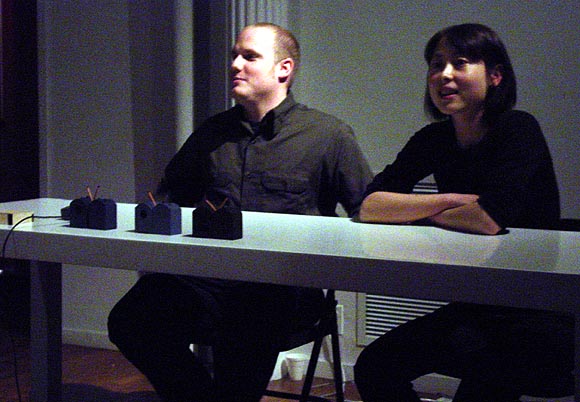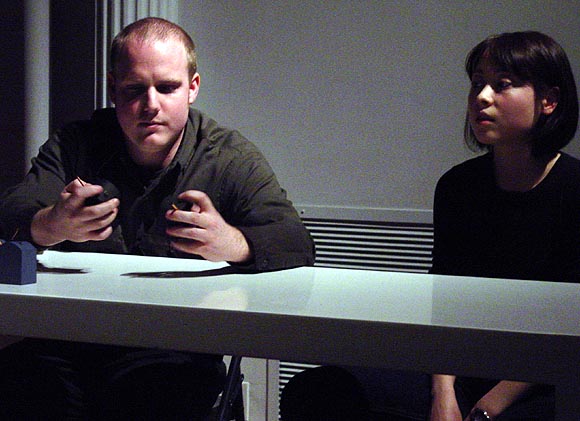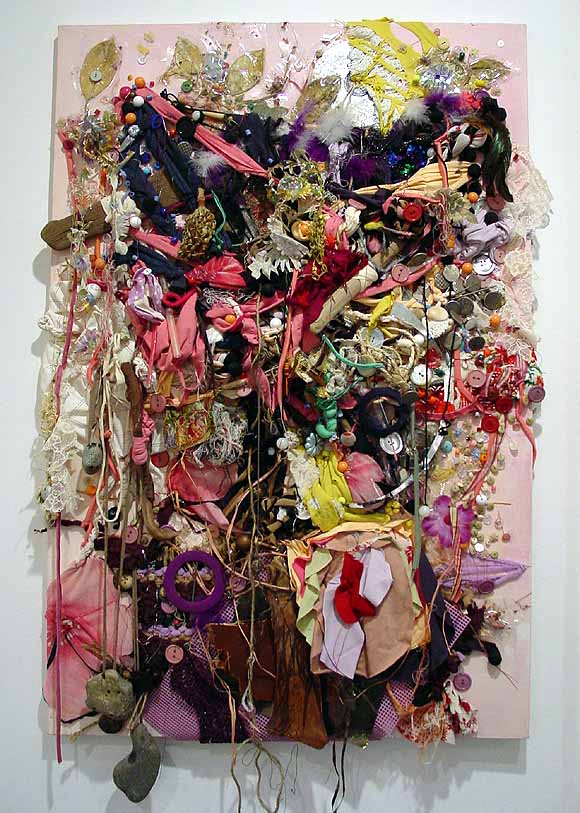View current page
...more recent posts
In the '50s, a time of postwar optimism and faith in science, there was Hi-Fi. In the '90s, an era of slackers and diminished expectations, there was Lo-Fi. In the '00s, a time of neanderthal government and outright contempt for the arts, there is Neg-Fi. A watershed moment in the history of art and music--some might say sub-nadir--was reached tonight when this New York noise-rock duo demonstrated its Wireless UFDs (uncontrollable feedback devices) to an audience of 100 or so at Dorkbot-NYC. Walkie talkies from the dollar store have been reinstalled in custom cardboard cases. When placed in proximity to each other and turned on, they make squealing and static noises. And that's about it!



Neg-Fi's cassettes and art objects are available through La Superette, which is currently having a Valentines' Day sale. Also on the Dorkbot program tonight were Aaron Yassin, who digitally assembles plein air photos of architecture into seductive tiled patterns reminiscent of Islamic mosaics and Gothic stained glass, and Jason Freeman, who recently had a piece performed at Carnegie Hall in which an orchestra played notes based on the rate at which concertgoers turned on and off glow sticks. The somber 20th Century classical sounds made by the players, reading from a score digitally translating from the blinking lights, seemed even more sedate considering the stick-waving rave taking place in the audience.
UPDATE: The Neg-Fi photos have been brightened up. In true neg-fi spirit they lost some detail, but they are less dingy and yellow now.

Another work from Leif Ritchey's show at ATM. In the beginning was Pollock, and it was called "formalism," but yea that was ridiculous because everyone knew it was a wrenching experience beyond language and not some pedantic exploration of art's technical building blocks. Then Pollock begat Mike Kelley, who stole from women (in a good way) and imbued the formal language that was never formal with specific cultural referents: the soiled stuffed animals plucked from a thousand swap meets that were tokens of love and personal debt: "more love hours than could ever be repaid." And they were good. And Pollock and Kelley begat Leif Ritchey, who returned art to its own innate discourse, leaving it to the viewer to find strands of narrative meaning in his seamstress bricabrac accumulated, teased, and tortured almost beyond belief. And thence it was bequeathed to cyberspace...
